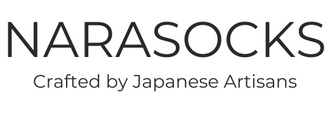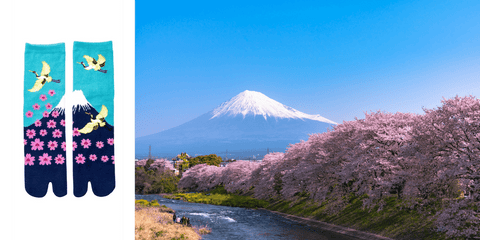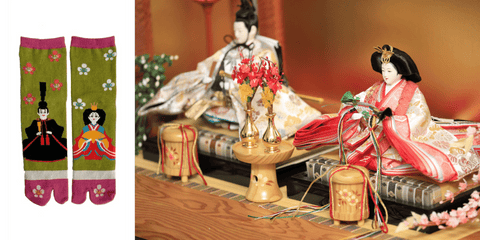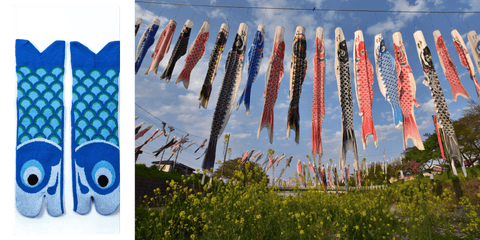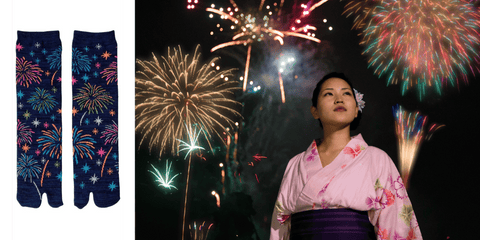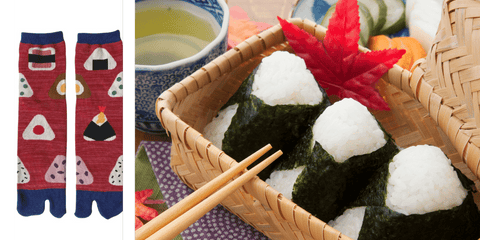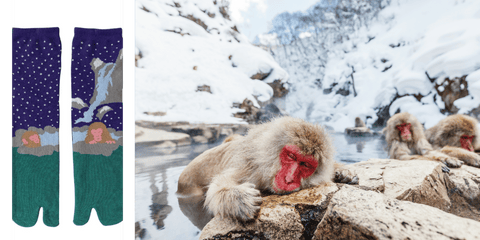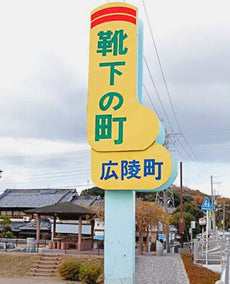Japanese Wagara Patterns and Designs
Wagara patterns refer to traditional Japanese patterns that are often used in various forms of art, crafts, kimono textiles, and design. Our Ninja Socks offer some seasonal and unique Wagara designs.
Let’s take a quick look at these patterns for each season!
New Year- Spring
Cranes and Mt. Fuji (Crane, Mt Fuji and Cherry Blossom)
Cranes and Mt. Fuji are prominent symbols in Japanese culture representing concepts such as longevity, good fortune, and happiness. It is believed that cranes live for a thousand years and are revered for their graceful appearance and elegant movements.
Cranes are also associated with love and fidelity in Japanese folklore. Legend has it that cranes mate for life and symbolize marital harmony and eternal love.
Mt. Fuji is Japan's highest and most iconic mountain; respected as a symbol of national pride, cultural heritage, and natural beauty. Fuji’s distinctive conical shape has made it a symbol of Japan both domestically and internationally.
Cherry Blossom
Cherry blossoms, known as Sakura in Japanese, hold profound cultural significance in Japan, particularly during the spring season. They symbolize the beauty and transience of life. The flowers bloom for only a short period, typically about one to two weeks in April, before falling from the trees. This fleeting nature serves as a reminder of the impermanence of life and the importance of cherishing the present moment. There are local Cherry Blossom festivals held during the season. People gather under the trees with food and drink to enjoy the whole scenery with family and friends.
Hina matsuri- Girls’ Day - Hina Dolls
Also known as Dolls' Day or Momo no Sekku, is a special Japanese festival celebrated on March 3rd each year. It is a day to pray for the health, happiness, and prosperity of young girls in the family.
One of the central customs of Hina matsuri is the display of hina dolls, which represent the Emperor, Empress, attendants, and musicians of the Heian period imperial court. These dolls are arranged on a tiered platform covered with red fabric, with the Emperor and Empress placed at the top and the attendants arranged below them. Peach blossoms, known as momo no hana, are often displayed alongside the dolls as symbols of purity and vitality. Special foods and snacks are prepared and enjoyed during this celebration, such as chirashi-zushi (scattered sushi) and hina-arare (sweet rice crackers).
Kodomo No Hi- Boys’ Day (Koinobori)
Boys’ Day is a Japanese national holiday celebrated annually on May 5th. It is a day dedicated to the happiness and well-being of children, particularly boys.
It has its roots in ancient Japanese customs and traditions. Originally known as Tango no Sekku, it was a day to celebrate and pray for the health and prosperity of boys in the family.
One of the most iconic symbols of the day is the koinobori, or carp-shaped windsocks. These colorful streamers are hung outside homes and buildings to represent the strength and determination of boys, as the carp is a symbol of perseverance and success in Japanese culture. In addition to koinobori, other traditional decorations associated with this day include kabuto (samurai helmets), yumi (bows), and arrows, as well as dolls and figurines depicting legendary heroes and characters from Japanese folklore.
Summer
Fireworks Festival (Fireworks)
Fireworks festivals, known as hanabi taikai in Japanese, are popular summer events held throughout Japan. These festivals typically take place between July and August, coinciding with the warm summer months when people gather to enjoy the spectacle of colorful fireworks lighting up the night sky.
Fireworks have a long history in Japan, dating back to the 16th century. Initially introduced as a form of entertainment for the aristocracy, fireworks gradually became popular among the public during the Edo period (1603–1868).
The festivals are often large-scale events that attract thousands of spectators. Some of the most famous fireworks festivals draw enormous crowds every year. They offer delicious festival foods like yakisoba (fried noodles), takoyaki (octopus balls), and yakitori (grilled chicken skewers). Food stalls line the streets near the festival venues, offering a wide variety of snacks and treats.
Fall
Shokuyoku no Aki- Appetite for Fall/Autumn of Appetite (Onigiri, Ramen)
This is not exactly a specific pattern, but you can’t skip it! Shokuyoku no Aki refers to the idea that autumn is a season when people's appetites are stimulated, and it's a time when delicious foods are abundant.
Fall is a time of harvest in many regions, and it's when a wide variety of fruits, vegetables, and crops reach maturity. These fresh, seasonal ingredients are used in various dishes, contributing to the richness and diversity of autumn cuisine. Some of the seasonal foods include mushrooms, chestnuts, sweet potatoes, persimmons, pumpkins, and various types of seafood. These ingredients are used in traditional Japanese dishes like nimono (simmered dishes), tempura, soups, stews, and desserts.
Although you can enjoy rice balls and ramen all year long, fall is the time when everything looks so good during the harvest season.
Winter
Snow Monkey ( Hot spring monkey )
There are groups of monkeys who enjoy hot springs during cold months in Japan. The practice of bathing in hot springs is believed to have started spontaneously among a group of monkeys in the 1960s in the Jigokudani Monkey Park in Nagano Prefecture. Over time, the behavior became more common among those monkeys in the region, especially during the cold winter months when they seek warmth. Japan is the only place where you can see these monkeys in hot springs!
I hope you enjoyed reading about the various seasonal events and icons in Japan. We will keep adding new designs to our Ninja Socks Collection, so please be sure to check back!
